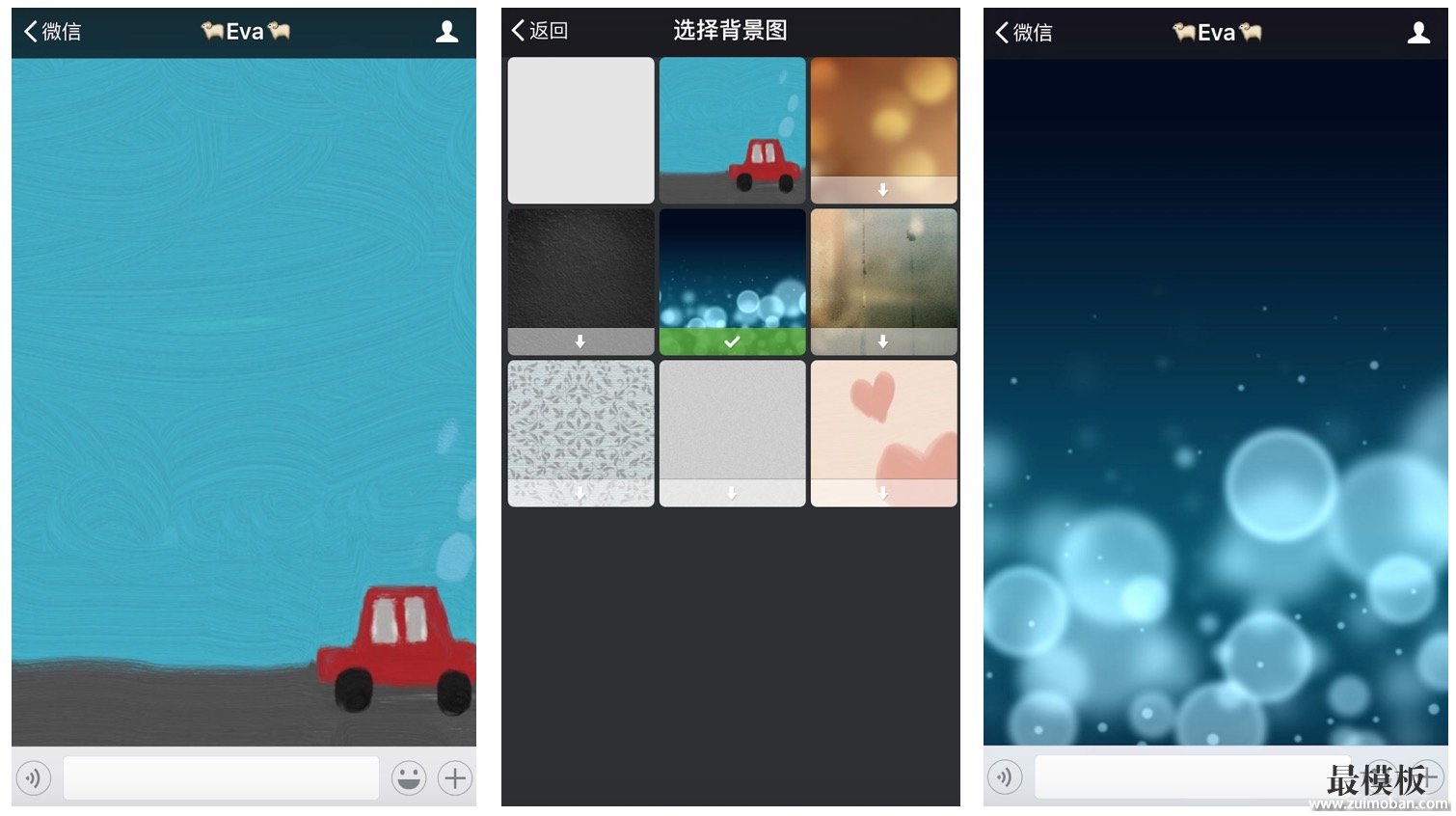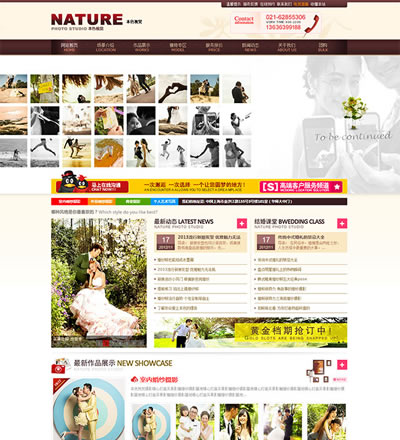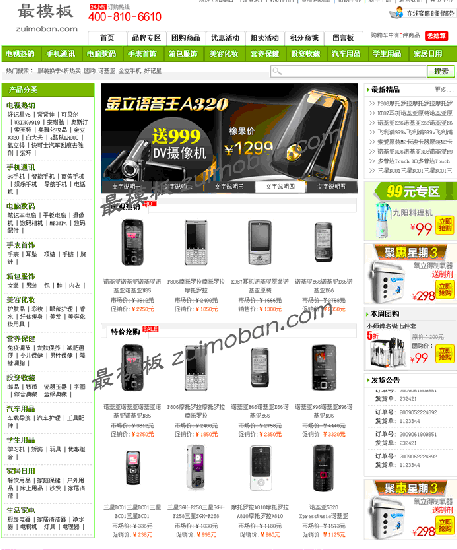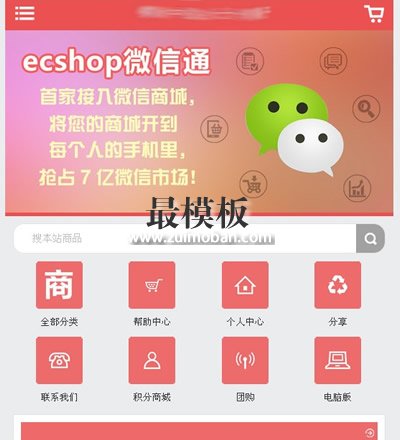在很多Android应用上,都有资源动态加载的功能,比如更换主题皮肤,替换聊天界面背景图片等。 
微信更换聊天窗口背景 以微信为例,当用户选择模板时,会先从网络上下载相应的图片资源,然后再替换为聊天界面的背景图片。我们知道,应用中的资源文件,包括图片,xml文件等,都是在编译的时候打包好的,那怎样才能动态加载资源呢? 其实有一个比较简单的思路,将需要替换的资源文件打包在一个apk文件中,动态下发到本地,然后通过重新构造Resources对象访问apk中的资源,进行本地的动态替换。主要有以下几个步骤: 一、指定资源文件加载路径Android应用中的资源是通过AssetManager来管理的,其中addAssetPath方法可以指定资源加载路径。
/**
* Add an additional set of assets to the asset manager. This can be
* either a directory or ZIP file. Not for use by applications. Returns
* the cookie of the added asset, or 0 on failure.
* {@hide}
*/
public final int addAssetPath(String path) {
synchronized (this) {
int res = addAssetPathNative(path);
makeStringBlocks(mStringBlocks);
return res;
}
}
很显然这是个隐藏的API,所以需要通过反射来调用。
private AssetManager createAssetManager(String skinFilePath) {
try {
AssetManager assetManager = AssetManager.class.newInstance();
Method addAssetPath = assetManager.getClass().getMethod("addAssetPath", String.class);
addAssetPath.invoke(assetManager, skinFilePath);
return assetManager;
} catch (Exception e) {
e.printStackTrace();
return null;
}
}
二、构造Resources对象
private Resources createResources(Context context, AssetManager assetManager) {
Resources superRes = context.getResources();
Resources resources = new Resources(assetManager, superRes.getDisplayMetrics(), superRes.getConfiguration());
return resources;
}
有了Resource对象,就可以访问指定路径的资源文件,进行动态替换,示例如下:
public class SkinManager {
private Resources mResources;
/**
* 获取APK资源
* @param context 上下文
* @param apkPath APK路径
*/
public void loadSkinRes(Context context, String skinFilePath) {
if (TextUtils.isEmpty(skinFilePath)) {
return ;
}
try {
AssetManager assetManager = createAssetManager(skinFilePath);
mResources = createResources(context, assetManager);
} catch (Exception e) {
e.printStackTrace();
}
}
private AssetManager createAssetManager(String skinFilePath) {
try {
AssetManager assetManager = AssetManager.class.newInstance();
Method addAssetPath = assetManager.getClass().getMethod("addAssetPath", String.class);
addAssetPath.invoke(assetManager, skinFilePath);
return assetManager;
} catch (Exception e) {
e.printStackTrace();
return null;
}
}
private Resources createResources(Context context, AssetManager assetManager) {
Resources superRes = context.getResources();
Resources resources = new Resources(assetManager, superRes.getDisplayMetrics(), superRes.getConfiguration());
return resources;
}
public Resources getSkinResource() {
return mResources;
}
}
在进入Activity的时候进行检查,如果有资源apk文件,则通过新的Resources对象进行资源获取。
public class MainActivity extends Activity {
private Context mContext;
private ImageView mBgView;
private SkinManager mSkinManager;
@Override
protected void onCreate(Bundle savedInstanceState) {
super.onCreate(savedInstanceState);
setContentView(R.layout.activity_main);
mBgView = (ImageView) findViewById(R.id.bg);
mContext = this;
mSkinManager = new SkinManager();
checkNewSkin();
}
private void checkNewSkin() {
String skinDir = "/mnt/sdcard/skin";
File file = new File(skinDir);
File[] skinFile = file.listFiles();
if (skinFile == null || skinFile.length == 0) {
return ;
}
mSkinManager.loadSkinRes(mContext, skinFile[0].getAbsolutePath());
if (mSkinManager.getSkinResource() != null) {
mBgView.setBackgroundDrawable(mSkinManager.getSkinResource().getDrawable(R.mipmap.skin));
}
}
}
这里是非常简单的处理,将编译好的资源apk文件push到本地sd卡直接加载,正常情况下应该是从网络下载,根据不同的模板名称进行资源的动态替换。 (责任编辑:最模板) |
Android资源动态加载思路
时间:2016-09-20 11:43来源:未知 作者:最模板 点击:次
在很多Android应用上,都有资源动态加载的功能,比如更换主题皮肤,替换聊天界面背景图片等。 微信更换聊天窗口背景 以微信为例,当用户选择模板时,会先从网络上下载相应的图片
顶一下
(0)
0%
踩一下
(0)
0%
------分隔线----------------------------
- 热点内容
-
- 理解 Android Crash处理流程
基于Android 6.0的源码剖析, 分析Android应用Crash是如何处理的。...
- Android activity中自动存取bundle中的数
DataAutoAccess Android activity中自动存取bundle中的数据。 Usages activi...
- Android WebView详解
WebView,在Android开发中,我们总是会遇到,它是Google封装的,使...
- Android 欢迎页快速启动
默认情况下,Android App在点击App logo到App完全启动这之间会有一段...
- Android 中的建造者模式
建造者模式(Builder Pattern)也叫生成器模式,其定义如下: se...
- 理解 Android Crash处理流程
- 随机模板
-
-
 dedecms本色视觉婚庆摄影企
人气:433
dedecms本色视觉婚庆摄影企
人气:433
-
 Ves Bags Store外贸综合服饰
人气:219
Ves Bags Store外贸综合服饰
人气:219
-
 ecshop仿红孩子母婴用品商
人气:1177
ecshop仿红孩子母婴用品商
人气:1177
-
 ecshop仿橡果国际2011模板
人气:684
ecshop仿橡果国际2011模板
人气:684
-
 zencart阿鹏红黑综合网站模
人气:889
zencart阿鹏红黑综合网站模
人气:889
-
 免费某ecshop商ecshop微信商
人气:21709
免费某ecshop商ecshop微信商
人气:21709
-
